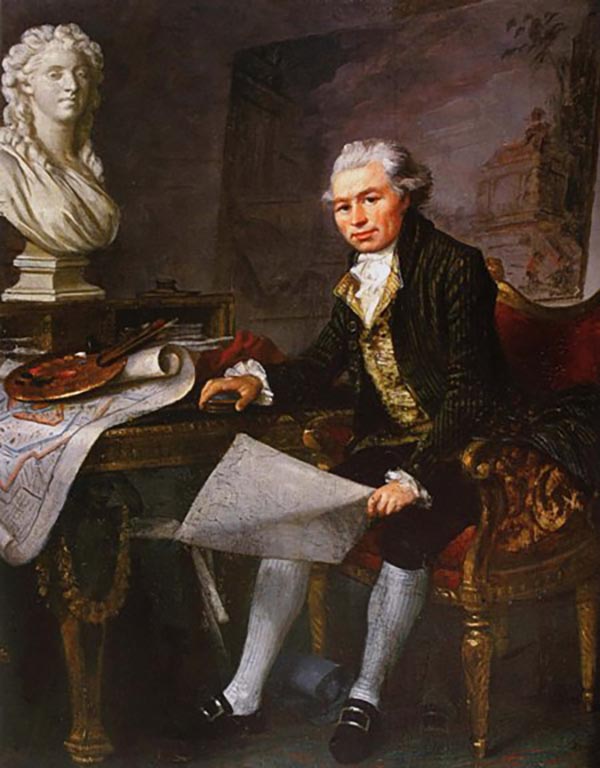Charles de Wailly (November 9, 1730 - November 2, 1798) was a French architect, civil engineer, and painter, known for his late 18th century neoclassical architecture in and around Paris. Born in Paris, he trained under leading architects of his time and became a member of the prestigious Académie Royale d'Architecture. De Wailly was a key figure in the neoclassical movement, influencing French architecture with a refined sense of proportion and classical form. His notable works include the Théâtre de l’Odéon and renovations of Château de Fontainebleau. He is less well known for his grandiose urban planning visions, likely because none of them came to fruition. De Wailly envisioned a sweeping transformation of the Parisian landscape intended not only to beautify Paris but also to optimize the efficiency of its urban space. His visions included the creation of wide new avenues, the construction of public squares, the erection of monuments, the expansion of housing, the unification of the city’s islands (Cité, Saint-Louis, and Louviers), and improvements to the flow of the Seine. These were presented and met with approval at the Salon of 1789, and may have gone forward, but De Wailly had terrible timing - the troubles later that year (the onset of the French Revolution) put an end to Louis XVI's royal investment in, well, anything.


